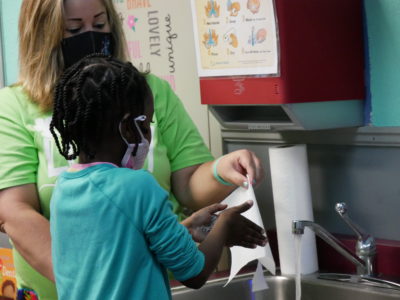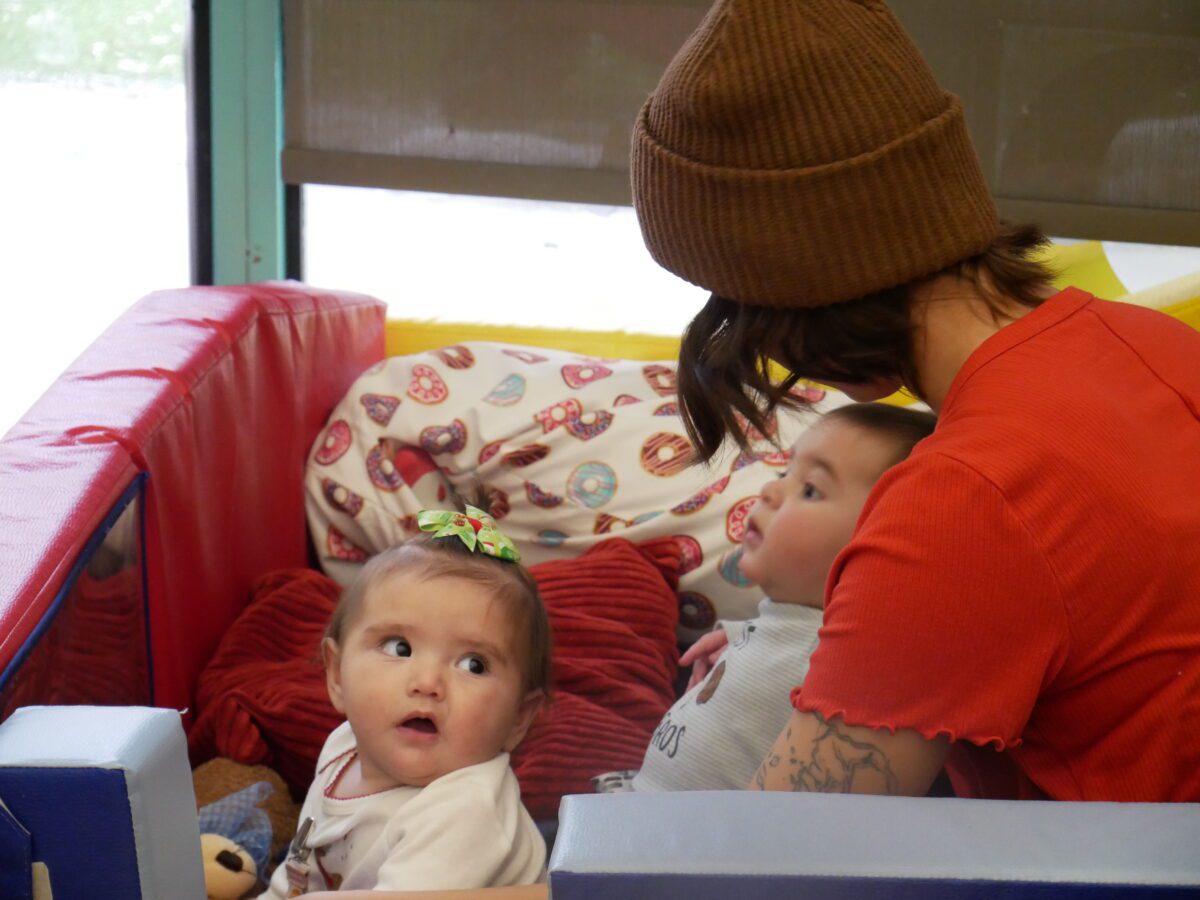
|
|
In 2022, New Mexico made national headlines for being the first state to guarantee a right to early childhood education through a constitutional amendment approved by 70% of voters.
Those voters placed early care and education in the same category as K-12 education, recognizing it as a public good worthy of state investment. Amendment 1 opened a consistent funding source previously reserved for K-12 — the state’s Land Grant Permanent Fund — to early learning.
As many states, including North Carolina, approach the expiration of federal funds that are keeping many child care programs open, they lack permanent funding sources to sufficiently support their early childhood systems. EdNC traveled to New Mexico to ask how the state’s historic win happened, what has happened since, and what other states can learn.
New Mexico’s first in-the-nation approach came from last-in-the-nation circumstances. Now in front of its leaders is a great responsibility and challenge to create a system that values the families it serves and the individuals who educate those families’ children — to bring to life the newest right in its constitution.
“We’ve never made it a public good before,” said Rebecca Baran-Rees, vice president for policy and community development at Growing Up New Mexico, a nonprofit that leads advocacy efforts for early childhood. “We have to build a rationale for both why early child care and education matters, and that we should conceive it as all the other public goods we fund publicly.”
Choosing early childhood during ‘years of insolvency’
The ballot win in 2022 is a small sliver of the state’s journey toward a system of universal early care and education. If you ask state leaders where that journey started, many point to the early 2010s.
“These were years of insolvency — of shrinkage,” said Kelly Klundt, principal analyst at the legislative finance committee. “And so why is that important to the story? For us, as a poor state with high-risk indicators, we really decided that early intervention was going to be our strategy, or our cornerstone, of what we were going to do.”
The state was the last to come out of the Great Recession, said Scott Darnell, who worked as the deputy chief of staff under Gov. Susana Martinez from 2011 to 2018. The government was divided between Martinez, a Republican, and a Democratic-controlled legislature. The state’s grim circumstances helped garner bipartisan support for change, he said.
“It was an enduring and persistent, rapid increase in funding at a time when every other part of government was facing flat budgets or lower budgets,” Darnell said.
“Early childhood was protected from all of that, because of a bipartisan belief, executive and legislative, in its importance, and that it needed to grow.”
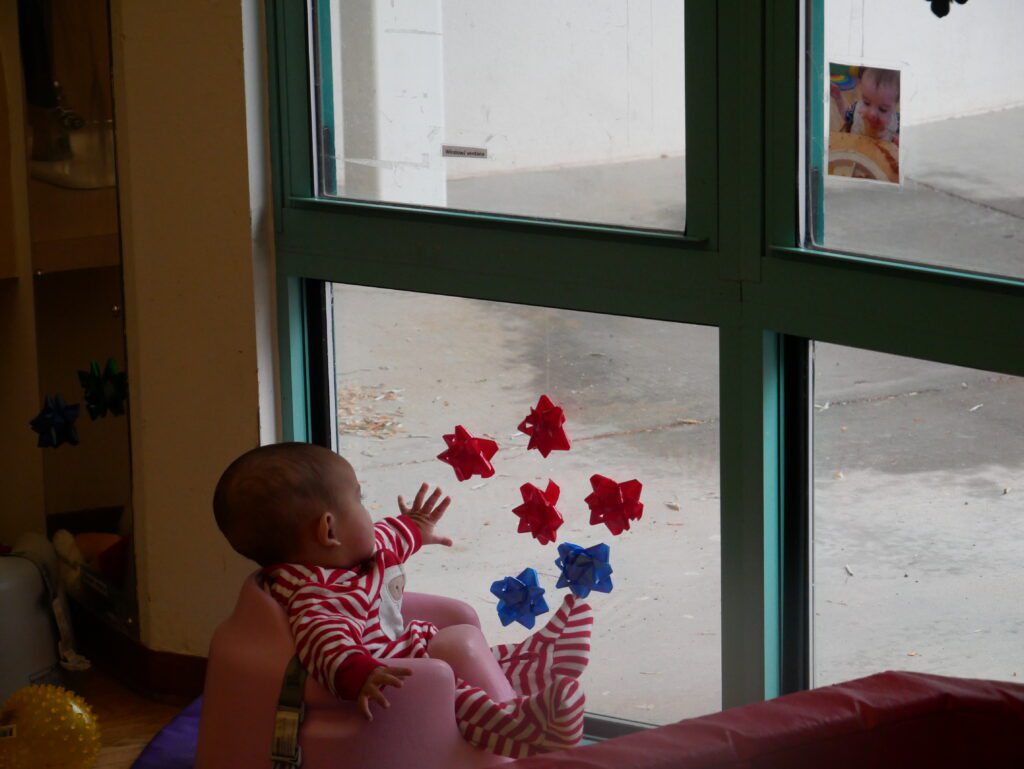
In one of the poorest states, with some of the country’s lowest K-12 educational outcomes, legislators and governors, as well as philanthropists and advocates, put faith — and dollars — into early childhood programs. They expanded pre-K and home visiting programs, strengthened early childhood teacher preparation, and formed a funder’s collaborative and a legislative caucus focused on early childhood.
At the center of much of this coordination was the Thornburg Foundation, which “uses an evidence-based strategic approach to solve systemic problems that impact people and communities,” according to its website.
On top of directly funding early childhood efforts, the foundation created a strategic plan and kept cross-sector leaders moving in the same direction with common language and goals.
That plan included three major pillars: governance, funding, and workforce development.
‘Holistic and coordinated’ governance
After running a campaign on early childhood, Gov. Michelle Lujan Grisham, a Democrat, and the state legislature created the Early Childhood Education & Care Department (ECECD) in 2019, a cabinet-level department, which officially launched in 2020.
As in many states, early childhood services and programs had been split among multiple departments, and were often overshadowed by other priorities.
It was the business community that was among the first advocates for a stand-alone department.
“It’s very unusual for a business organization to endorse creating a new agency in government,” said Darnell, who worked at the Albuquerque Chamber of Commerce during the time. Yet businesses saw that coordination and accountability were needed, he said.
And they saw that poor education outcomes were affecting business development across the state.
“You have to appreciate that education is an economic development issue, and if you do, I don’t think that that’s a big leap to then say you have to start early,” he said.
Grisham appointed Elizabeth Groginsky, who had led early childhood policy reforms in Washington, D.C., as the state’s first secretary of early education to lead ECECD.
Groginsky brought Sara Mickelson, deputy secretary of the department, with her from Washington.
“We wouldn’t be able to have conversations in the same holistic way and coordinated way and leverage the funding that we have from the feds and the state together to solve any of these issues — access, quality, workforce — that exist in our field, without a cabinet-level agency,” Mickelson said.
Two permanent funding streams
Although the Land Grant Permanent Fund, which sends about $150 million to ECECD annually, was a big win in 2022, another permanent early childhood funding source has put the state’s early childhood efforts at the forefront.
The New Mexico Early Childhood Education and Care Fund, created in 2020 and funded by oil and gas revenue, sent another $150 million to the department in 2023. The most recent fiscal projections put the fund at $9.8 billion by 2028, which would send $486 million to the department.
“It’s an underreported part of the sustainable funding sources in New Mexico,” Baran-Rees said. “Everyone wants to talk about the Land Grant Permanent Fund, which is amazing. It sets a precedent … And the Early Childhood Trust Fund was also pretty radical, and happens to be a huge funding source.”
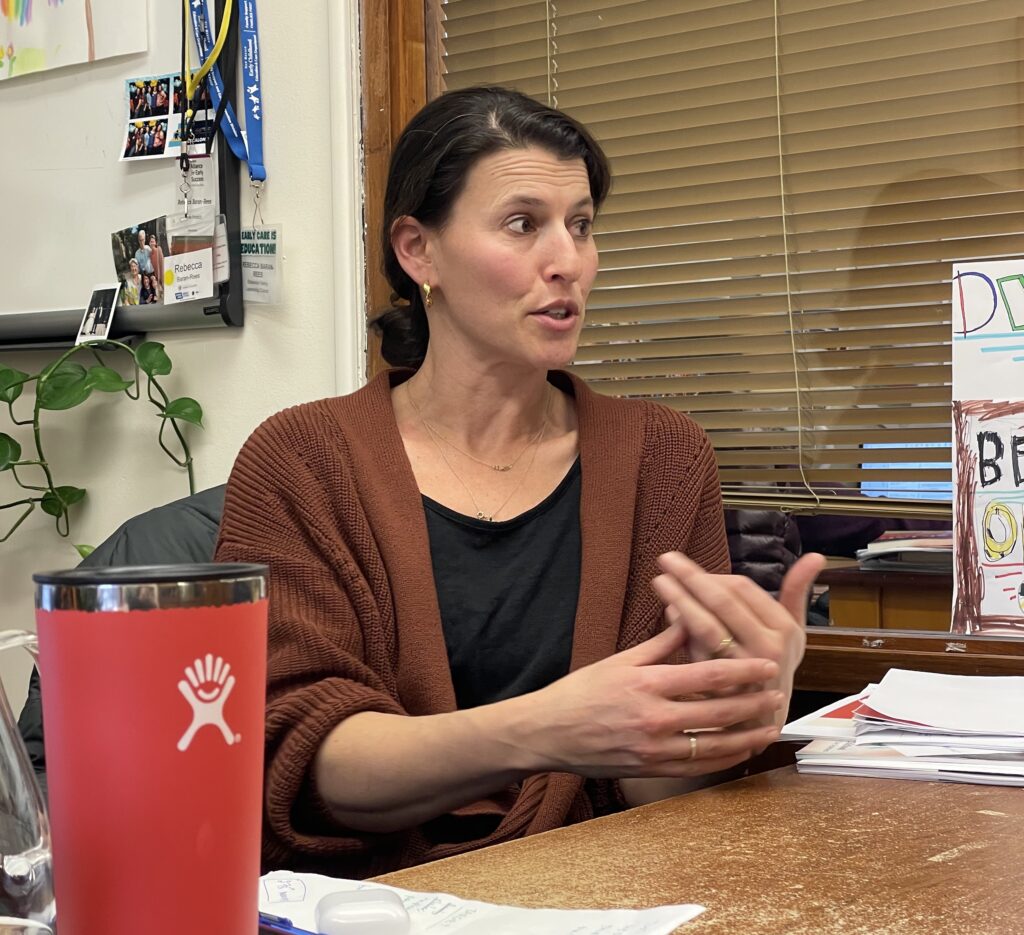
Large investments are already making a big difference. The financial cliffs that other states face — North Carolina’s is due on June 30 — when the last of the American Rescue Plan dollars expire, do not exist in New Mexico.
That’s because the federal funds, which the state used to eliminate co-pays for parents using subsidy funds and increase subsidy eligibility to 400% of the poverty level, are being replaced with state funds, Klundt said.
“To pull back those benefits from families in years where we have such financial stability would not help us,” she said.
The department also has raised subsidy reimbursement rates, modeling the amounts that providers receive on a cost model, rather than market rates.
‘We’re not on the brink‘
Those policy and funding changes are felt every day at Kids Campus, a child care center attached to Santa Fe Community College that serves 128 children, the largest program in the city.
The center prioritizes serving the children of students and faculty at the college, but 70% of its children are from other families in the community. Only 10% of the children’s families pay out of pocket.
Deyanira Contreras, director of the center, said the broadened eligibility is a life-changer for the families she serves.
“They were like, ‘Oh my gosh, we can have a breath and be able to pay our mortgage or be able to buy a new car,’ because now they don’t have to pay for child care,” Contreras said. “So there’s so many of our families that didn’t qualify before and now they qualify.”
And the boosts in funding don’t just increase access, she said, but raise quality.
The center has increased pay from $13 to $20 per hour at a minimum.
“Before the funding, we had so much turnover,” Contreras said. “Our pay was just a joke. We used to have a great teacher, and he was working here, but he had a second job at McDonald’s, and actually he was getting more money at McDonald’s.”
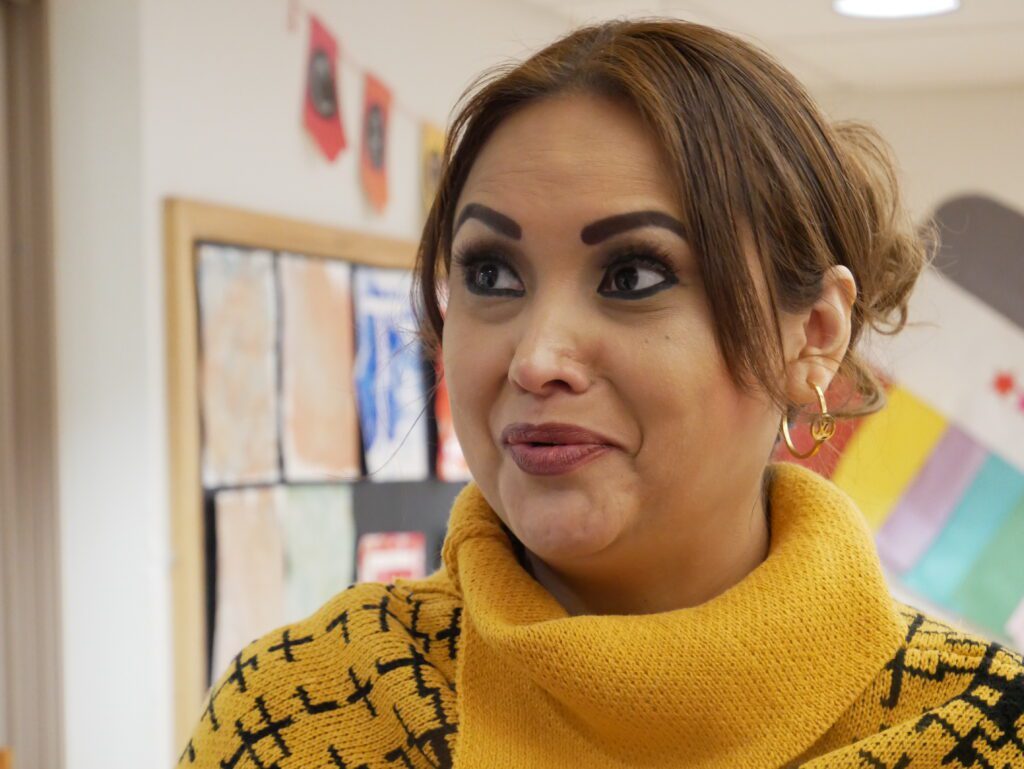
Catron Allred, director of the Early Childhood Center for Excellence at Santa Fe Community College, which oversees Kids Campus, said they’ve also used the funding to hire more teachers. That means having three adults in every classroom, which is higher than the recommended state teacher-to-child ratios, she said.
“We are not on the brink,” Allred said. “We are so much more stable now.”
On top of overseeing compensation increases for the employees of Kids Campus, Allred has been working to increase access to postsecondary education for the early childhood workforce across the state.
She helped create a mentorship program to ensure prospective teachers had positive hands-on experiences — which has grown to include cohorts of directors and infant-toddler teachers.
Allred said the state’s higher education institutions and advocates also have created stackable credentials for individuals interested in becoming early childhood teachers, built an apprenticeship program, and strengthened articulation agreements across the state to support students who transfer or move.
Going back to school is also free for early childhood teachers through funds from ECECD and the state’s Opportunity Scholarships.
‘This next major step’: Workforce
Though progress has been made in pockets, strengthening the early childhood workforce is the state’s next big challenge, leaders said.
“We’re precisely at this next major step of legitimizing this workforce, figuring out how to actually practically help these folks become credentialed and degreed in ways that are reasonable, actually give them skills and support that they need to do their jobs well,” Baran-Rees said.
The subsidy cost model factors in a minimum of $20 for teachers, but that only works when the program is serving enough children through subsidy. In the meantime, the state has given direct wage supplements to teachers.

Mickelson said the department will focus in the next legislative session on increasing pay for teachers who work with infants and toddlers.
“We know that’s where there’s the most disparate pay,” she said.
Though advocates, policymakers, and community leaders across the country have begun to watch New Mexico’s story unfold, Mickelson said her goal is that every family in the state knows that story as their own.
“We have this awesome responsibility to children, to families, to the field of early childhood, to have the moment we have politically and financially — to sustain that — and to be great stewards of the resources that we have,” she said. “We have such an opportunity for families … to feel like having a baby in New Mexico or having a young child in New Mexico — that your state is your village.”
Recommended reading


